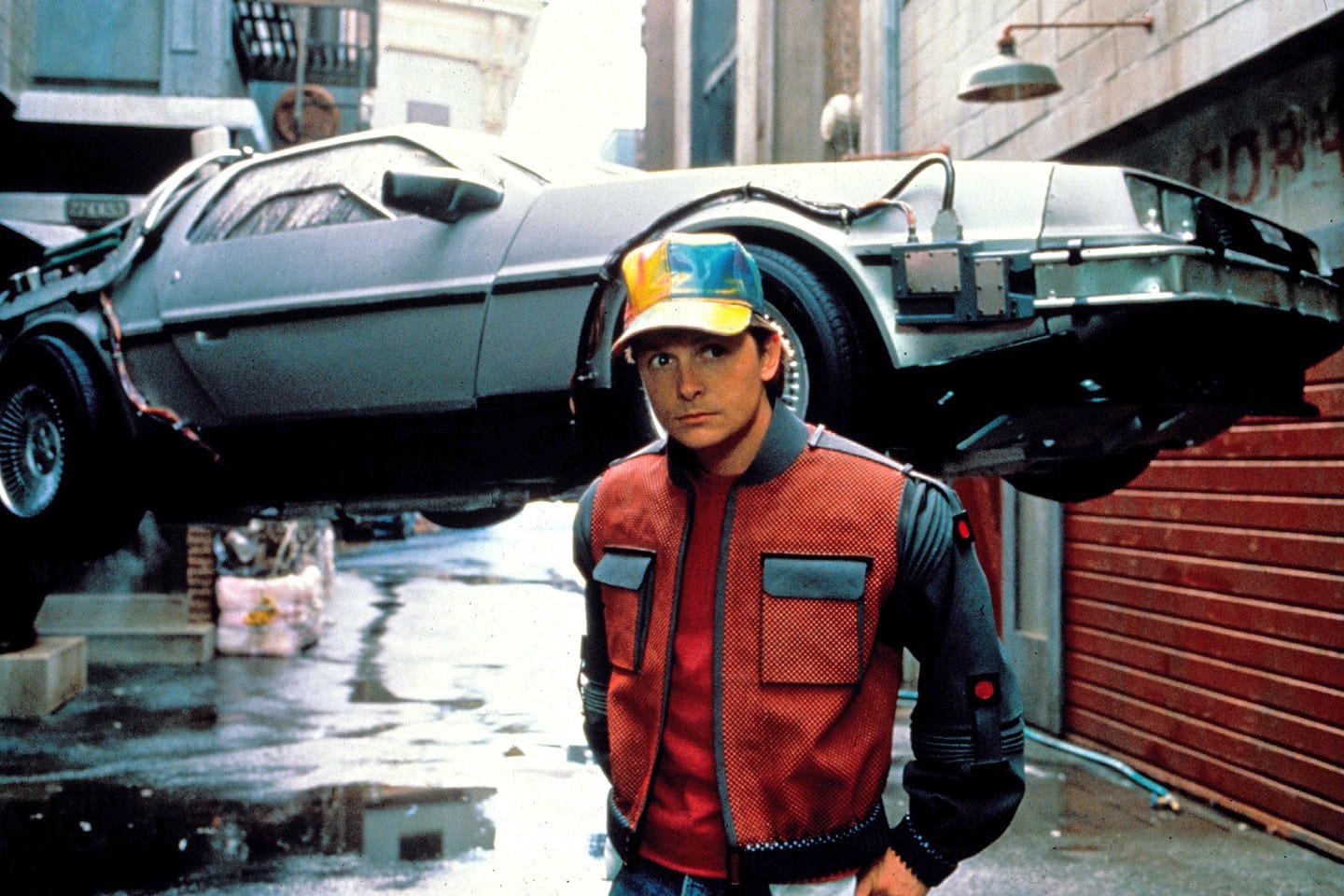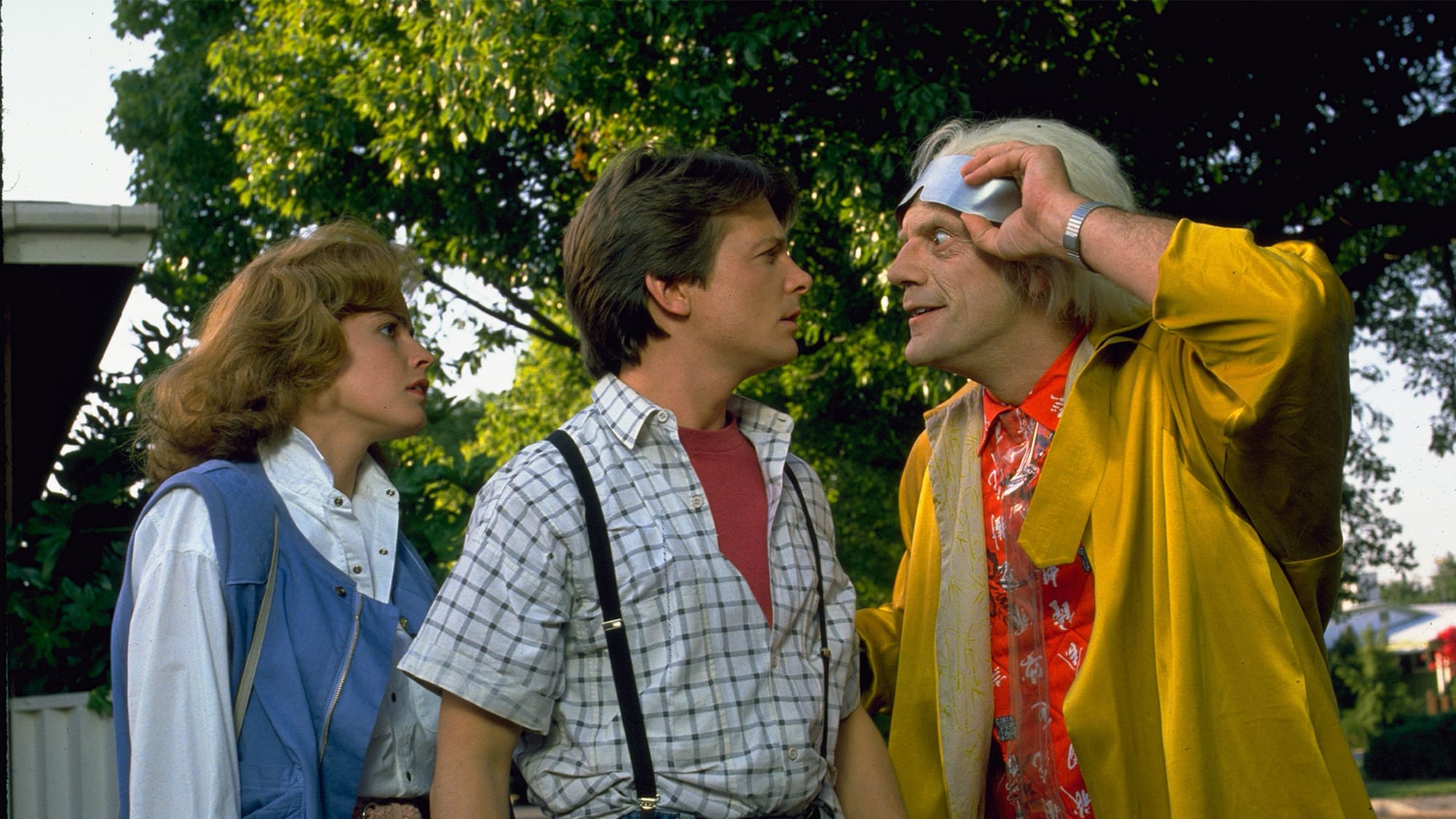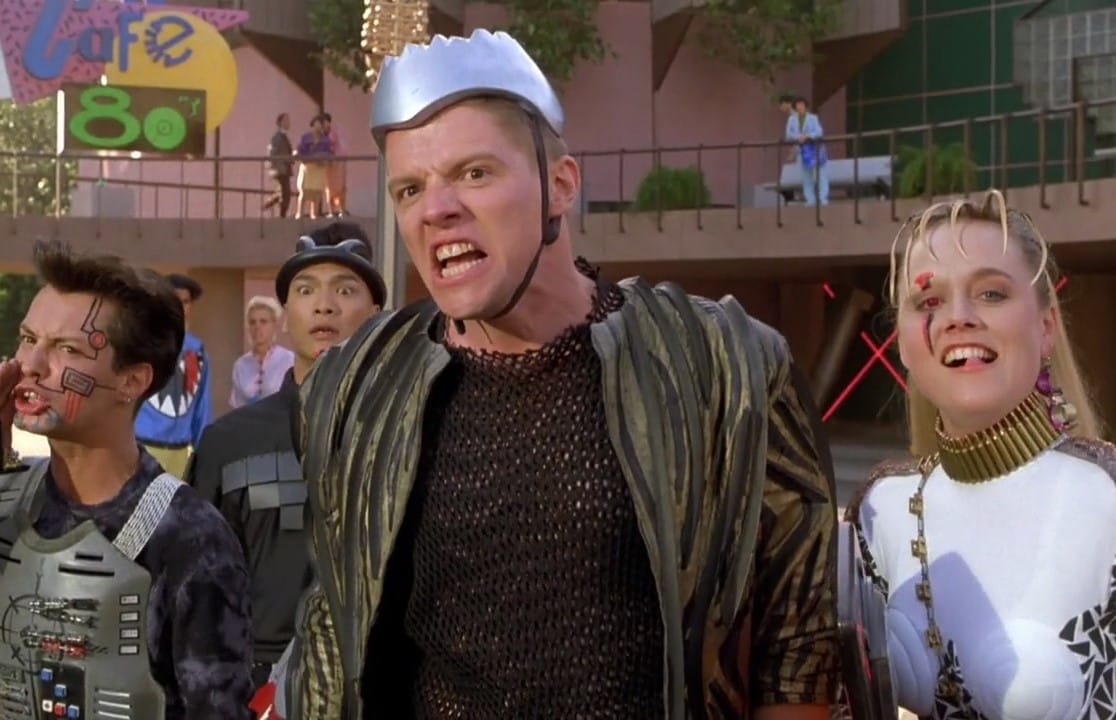Hollywood & Spine Archive: Back to Back, Vol. 2
An overview of the novelization to BACK TO THE FUTURE PART II, originally published in June 2020.

I have good memories of the Back to the Future Part II novelization, in part because I have fond memories of the film. As a child, I collected a full, complete set of Topps trading cards from the movie, and I definitely first read this novelization long before Hollywood & Spine was a thing. A fun detail from the book I didn't share that I love is that, at one point, Marty sees a "Baby on Board" sticker in the Cafe '80s and has no recollection of it, since those hadn't yet caught on in 1985 (but sure did by the film's release in 1989). I have a feeling such a sticker is going to figure into my life in the near-future, so it makes me laugh even more, now. (originally published 6/12/2020)

Back to the Future Part II by Craig Shaw Gardner (based on a screenplay by Bob Gale; story by Robert Zemeckis and Bob Gale) (Berkeley, 1989)
The pitch: The sequel-anticipating ending was a joke, but the box office returns were not, so Marty McFly and Doc Brown are back for more misadventures in their time-traveling DeLorean.
The author: A notable fantasy writer from the '80s to the present, Craig Shaw Gardner was also something of a steady hand in the novelization game. His adaptations include The Lost Boys and that same year's hit version of Batman.
The lowdown: In our last installment covering the novelization of Back to the Future, we discovered the pitfalls that can come with writing a film adaptation before its creative tone is set. For Gardner, who penned the novelizations to the film's two sequels, this was not a problem: Back to the Future was the top-grossing film of 1985, and the BTTF brain trust, writer/producer Bob Gale and story writer/director Robert Zemeckis, balanced the themes and tones that made the first film such a cross-generational crowd-pleaser.
That's not to say they nailed it on the first try, though. The initial draft of Part II offered a third act where Marty and Doc traveled to 1967 to prevent Biff from enacting his temporal get-rich-quick scheme with a book of sports statistics. (Naturally, Marty's existence is again jeopardized after he's arrested in the '60s and saved by his mom-to-be Lorraine - a peace activist who remembers her friend from 12 years earlier - with bail money earmarked for the romantic getaway that resulted in his conception.)
Gale's revised script became two installments, filmed back-to-back. This resulted in one of BTTF Part II's most cheekily brilliant sequences: a subtle meta-commentary on film sequels where the climactic actions of the new film folded over the events of the first film as they happened. Combined with a surprisingly cheery (and tragically inaccurate) portrayal of 2015 in the film's first act, Part II offered the same signature blend of science fiction, comedy, action and romance as its predecessor.

This makes Gardner's job a lot easier than the late George Gipe, who was likely working on the Back to the Future novelization before Michael J. Fox even stepped into the role of Marty McFly. We know what Marty, Doc Brown, Biff Tannen and the McFly family are like by this point, and Gardner matches those characters perfectly on the page. Like his work on Batman that same year, BTTF Part II jumps off the page just as the movie does. The power laces fit the same, and the alternate "Biffhoriffic" 1985 is caked in the same grime you see on screen.
Gardner handles the widening of the BTTF series' themes brilliantly, too. For sci-fi buffs, there's the looming threats of Marty and Doc's adventures causing a paradox, which don't get bogged down in any more pop-sci terminology than what's on display in the film. For lovers of human drama, there's Marty's newly-established emotional short fuse when being called "chicken." With the gift of third-person narration, Gardner deepens that sentiment a bit, taking us into Marty's mind as he's tried to unlearn this behavior in the past (counting to 10, trying to take advice from his mother and so on).

If there's a downside to Gardner's approach, it's that Back to the Future Part II is almost too reserved as a novelization, given the thrill of capturing a semi-utopian (if a little too corporate) future, a dismal alternate reality and a surprising climax that adds new dramatic developments on top of existing ones. (Part of that is actually in the printing: there are apparently two editions of the book, one of which removes all the PG-accepted coarse language that is prevalent in the trilogy. That is what was read here, and it did feel a bit squeaky clean at times.) The Part II novel has neither the out-there tone of its predecessor nor a few things that make the adaptation of Part III such a unique reading experience...but that's for another installment of Hollywood & Spine.
The cutting room floor: Most scenes written or shot but never used in Part II often tie into follow-ups to jokes from the first film. In the alternate 1985, before coming face to face with his mother and Biff, Marty encounters his older brother Dave, now a burned-out drunk. And when putting the flying DeLorean into action in 1955, Doc briefly attracts the attention of the pine farmer Peabody, the first to encounter Marty in 1955 in the first film, now convinced that Hill Valley is being invaded by more spacemen.

Another great bit in the novel but not the film - and it's kind of a shame - is Marty observing things in the futuristic Cafe '80s that he doesn't recognize. As the film was released in 1989 but set four years prior, there were opportunities to joke about future fads like "Baby on Board" signs, which can be seen in the cafe but are never addressed.
The last word: It might be slightly disappointing to say so, but for better or worse, this is the most restrained novelization in the Back to the Future series - albeit attached to a sequel that isn't nearly as interested in holding back.
